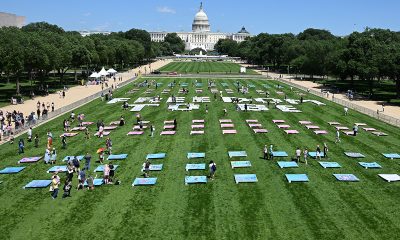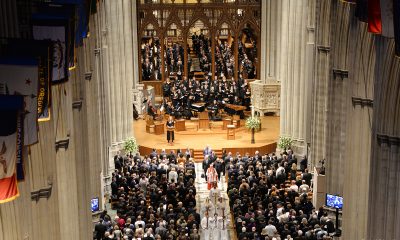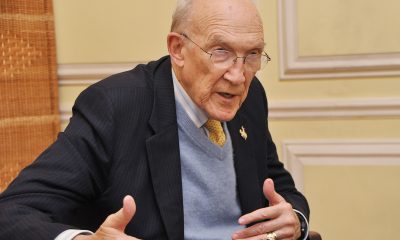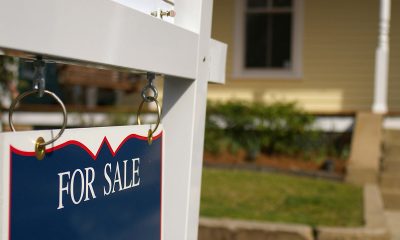Opinions
‘October Mourning’ reflects on Shepard’s death
Lesbian author shaken by Wyo. student’s murder 14 years ago
Stories can be told in many ways. Two new works—one poetic, one academic—take strikingly different approaches to telling the stories of LGBT people and families.
The first is by Lesléa Newman, best known as the author of the groundbreaking children’s book “Heather Has Two Mommies.” Newman is also an award-winning poet, however, and served as the poet laureate of her hometown of Northampton, Mass. in 2008-2010. Her new work draws on her poetic skill, and, with its much more somber tone, is aimed at older audiences.
“October Mourning: Songs for Matthew Shepard” is a cycle of 68 poems that serve as reflections on the death of Matthew Shepard, the University of Wyoming student killed in a brutal gay-bashing in October 1998. Newman was scheduled to be the keynote speaker at the university’s Gay Awareness Week just a few days after the tragedy.
Despite being shaken by the event, Newman gave her talk, she writes in the afterward to her book, recognizing the Wyoming community’s need not for her exact words, but for her presence as an out, proud lesbian to show them such a life was possible.
Later, she reflected on the many people who had told her “I can’t imagine,” in response to the murder. Her poems, which she calls “a historical novel in verse,” are her attempt to imagine—not only because that is her job as a poet, she writes, but also because it is her job as a human. She explains, “Only if each of us imagines that what happened to Matthew Shepard could happen to any one of us will we be motivated to do something. And something must be done.”
The poems speak from a variety of imagined perspectives, including Matthew, his assailants, his parents, the mountain biker who first found him, the police officer who came next, the doctor who treated him, and the housekeeper at the hospital—but also the stars above, the deer found curled next to him, and the fence he was tied to, as well as less specific mothers, fathers, students, gay people and others who heard of the killing.
The lines are brief and haiku-like in their simplicity (a few are in actual haiku form), giving them a rawness and impact that might well be lost among more words. Newman’s slim volume reminds us why, even twelve years after Shepard’s death, his story still resonates.
The second new book takes a very different approach to LGBT lives. “Gay Dads: Transitions to Adoptive Parenthood,” by Dr. Abbie Goldberg, associate professor of psychology at Clark University in Massachusetts, and senior research fellow at the Evan B. Donaldson Adoption Institute, is an examination of gay couples before and just after they adopt children. While written in part for an academic audience, the book is nevertheless extremely accessible for lay readers. Gay dads (and prospective gay dads), as well as adoption providers, social workers, and lawyers, among others, will find much of value in it.
Goldberg’s previous book, “Lesbian and Gay Parents and Their Children,” took a broader look at LGBT families, and remains the best one-volume overview of research on the topic. In “Gay Dads,” however, she looks more in depth at a smaller segment of our community.
Goldberg conducted a study of 70 adoptive gay dads (35 couples) from across the country, interviewing them when they were seeking to adopt as well as several months after they had adopted. More than 80 percent were white and well educated (although over half had adopted trans racially). This is just a slice of our full community—but Goldberg recognizes the need for further work on gay dads of color and working-class gay men.
She starts by looking at the decision-making process that led the men to choose parenthood in general and adoption in particular. After that, she explores how adoptive parenthood—private, public, domestic, and international—affected the men’s relationships to each other, their families, friends and communities.
One major question she tries to answer is whether the men reinforced or resisted the “heteronormative” standard of two parents settling down with kids, often with the mother as a stay-at-home caregiver.
Goldberg found that variation among the men—and even within individuals—means we cannot simply split them into two groups. “Some men conformed to heteronormativity in some aspects of their lives and resisted it in others,” she writes. At the same time, even if they didn’t actively resist traditional ideas, “their very existence [as gay adoptive parents] poses a challenge to heteronormativity.”
The above two books may seem an unlikely pair. One is emotional verse; the other dispassionate research. Each, however, has its place in painting a fuller picture of LGBT people and our interactions with the world around us.
Dana Rudolph is the founder and publisher of Mombian (mombian.com), an award-winning blog and resource directory for LGBT parents.
Letter-to-the-Editor
Candidates should pledge to nominate LGBTQ judge to Supreme Court
Presidential, Senate hopefuls need to go on the record
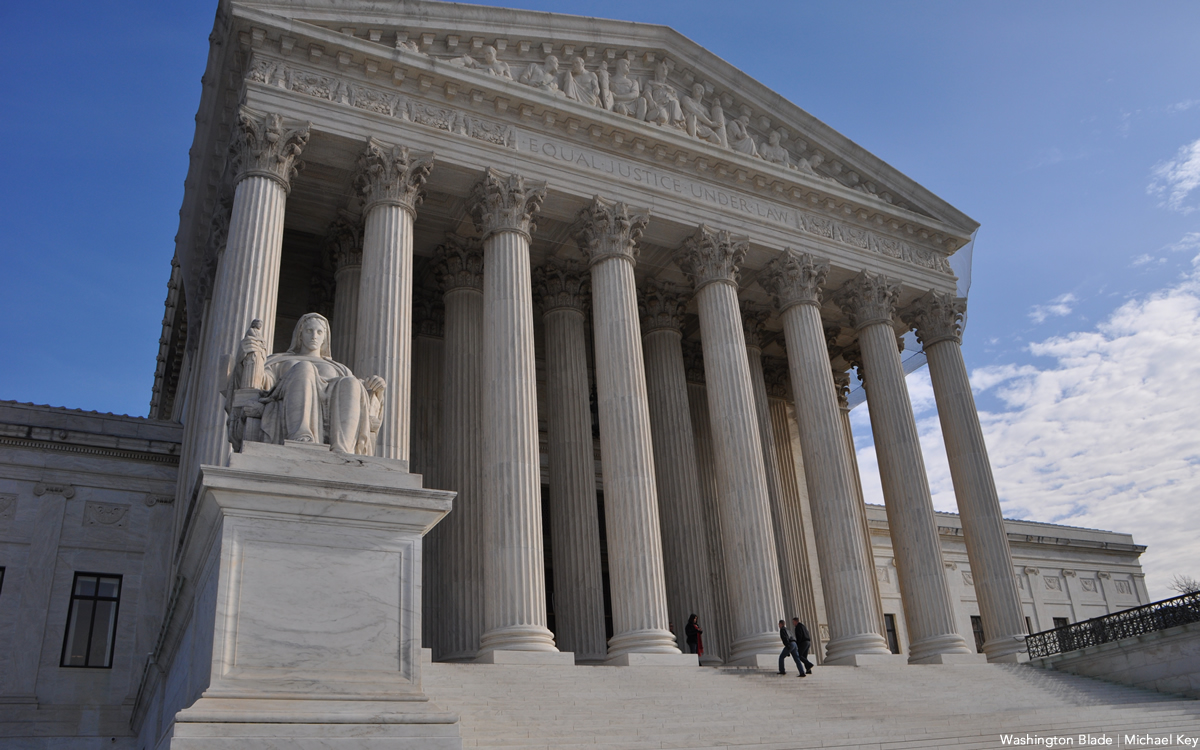
As soon as the final votes are cast and counted and verified after the November 2026 elections are over, the 2028 presidential cycle will begin in earnest. Polls, financial aid requests, and volunteer opportunities ad infinitum will flood the public and personal media. There will be more issues than candidates in both parties. The rending of garments and mudslinging will be both interesting and maybe even amusing as citizens will watch how candidates react to each and every issue of the day.
There is one particular item that I am hoping each candidate will be asked whether in private or in public. If a Supreme Court vacancy occurs in your potential administration, will you nominate an open and qualified LGBTQ to join the remaining eight?
Other interest groups on both sides have made similar demands over the years and have had them honored. Is it not time that our voices are raised as well? There are several already sitting judges on both state and federal benches that have either been elected statewide or approved by the U.S. Senate.
Our communities are being utilized and abused on judicial menus. Enough already! Challenge each and every candidate, regardless of their party with our honest question and see if honest answers are given. By the way … no harm in asking the one-third of the U.S. Senate candidates too who will be on ballots. Looking forward to any candidate tap dancing!
Opinions
2026 elections will bring major changes to D.C. government
Mayor’s office, multiple Council seats up for grabs
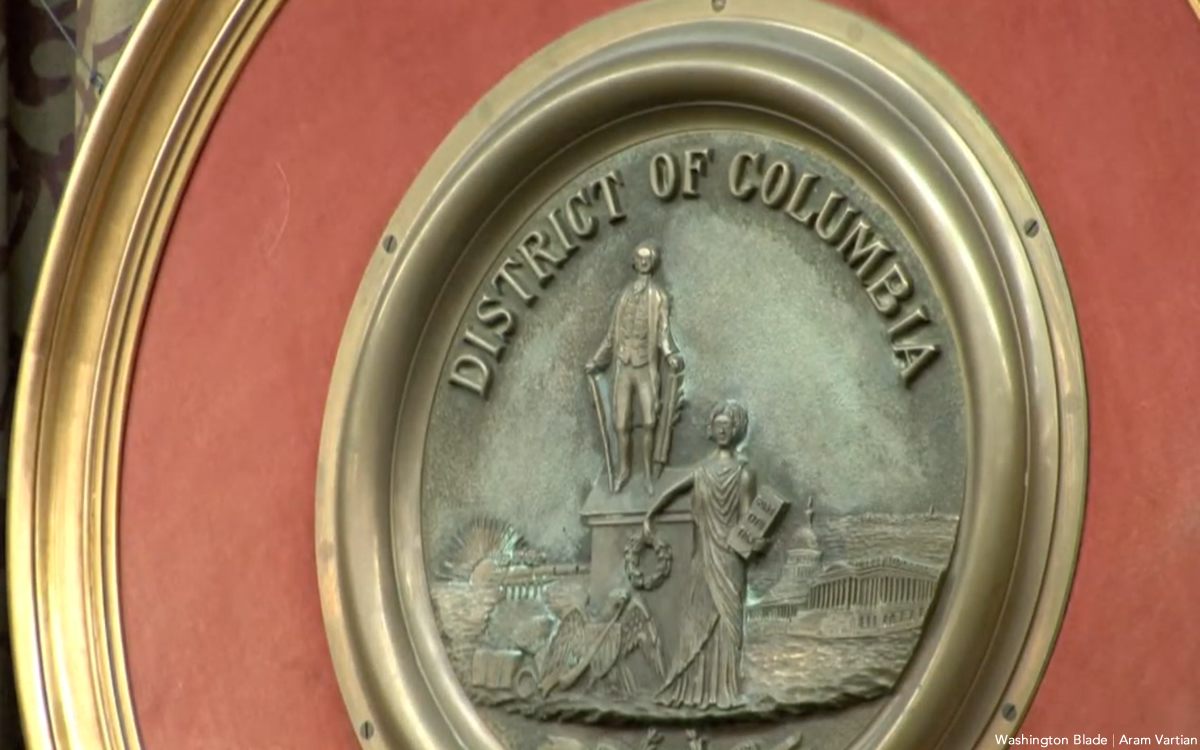
Next year will be a banner year for elections in D.C. The mayor announced she will not run. Two Council members, Anita Bonds, At-large, and Brianne Nadeau, Ward 1, have announced they will not run. Waiting for Del. Norton to do the same, but even if she doesn’t, there will be a real race for that office.
So far, Robert White, Council member at-large, and Brooke Pinto, Council member Ward 2, are among a host of others, who have announced. If one of these Council members should win, there would be a special election for their seat. If Kenyon McDuffie, Council member at-large, announces for mayor as a Democrat, which he is expected to do, he will have to resign his seat on the Council as he fills one of the non-Democratic seats there. Janeese George, Ward 4 Council member, announced she is running for mayor. Should she win, there would be a special election for her seat. Another special election could happen if Trayon White, Ward 8, is convicted of his alleged crimes, when he is brought to trial in January. Both the Council chair, and attorney general, have announced they are seeking reelection, along with a host of other offices that will be on the ballot.
Many of the races could look like the one in Ward 1 where at least six people have already announced. They include three members of the LGBTQ community. It seems the current leader in that race is Jackie Reyes Yanes, a Latina activist, not a member of the LGBTQ community, who worked for Mayor Fenty as head of the Latino Affairs Office, and for Mayor Bowser as head of the Office of Community Affairs. About eight, including the two Council members, have already announced they are running for the delegate seat.
I am often asked by candidates for an endorsement. The reason being my years as a community, LGBTQ, and Democratic, activist; and my ability to endorse in my column in the Washington Blade. The only candidate I endorsed so far is Phil Mendelson, for Council chair. While he and I don’t always agree on everything, he’s a staunch supporter of the LGBTQ community, a rational person, and we need someone with a steady hand if there really are six new Council members, out of the 13.
When candidates call, they realize I am a policy wonk. My unsolicited advice to all candidates is: Do more than talk in generalities, be specific and honest as to what you think you can do, if elected. Candidates running for a legislative office, should talk about what bills they will support, and then what new ones they will introduce. What are the first three things you will focus on for your constituents, if elected. If you are running against an incumbent, what do you think you can do differently than the person you hope to replace? For any new policies and programs you propose, if there is a cost, let constituents know how you intend to pay for them. Take the time to learn the city budget, and how money is currently being spent. The more information you have at your fingertips, the smarter you sound, and voters respect that, at least many do. If you are running for mayor, you need to develop a full platform, covering all the issues the city will face, something I have helped a number of previous mayors do. The next mayor will continue to have to deal with the felon in the White House. He/she/they will have to ensure he doesn’t try to eliminate home rule. The next mayor will have to understand how to walk a similar tightrope Mayor Bowser has balanced so effectively.
Currently, the District provides lots of public money to candidates. If you decide to take it, know the details. The city makes it too easy to get. But while it is available, take advantage of it. One new variable in this election is the implementation of rank-choice voting. It will impact how you campaign. If you attack another candidate, you may not be the second, or even third, choice, of their strongest supporters.
Each candidate needs a website. Aside from asking for donations and volunteers, it should have a robust issues section, biography, endorsements, and news. One example I share with candidates is my friend Zach Wahls’s website. He is running for United States Senate from Iowa. It is a comprehensive site, easy to navigate, with concise language, and great pictures. One thing to remember is that D.C. is overwhelmingly Democratic. Chances are the winner of the Democratic primary will win the general election.
Potential candidates should read the DCBOE calendar. Petitions will be available at the Board of Elections on Jan. 23, with the primary on June 16th, and general election on Nov. 3. So, ready, set, go!
Peter Rosenstein is a longtime LGBTQ rights and Democratic Party activist.
Opinions
Lighting candles in a time of exhaustion
Gunmen killed 15 people at Sydney Hanukkah celebration
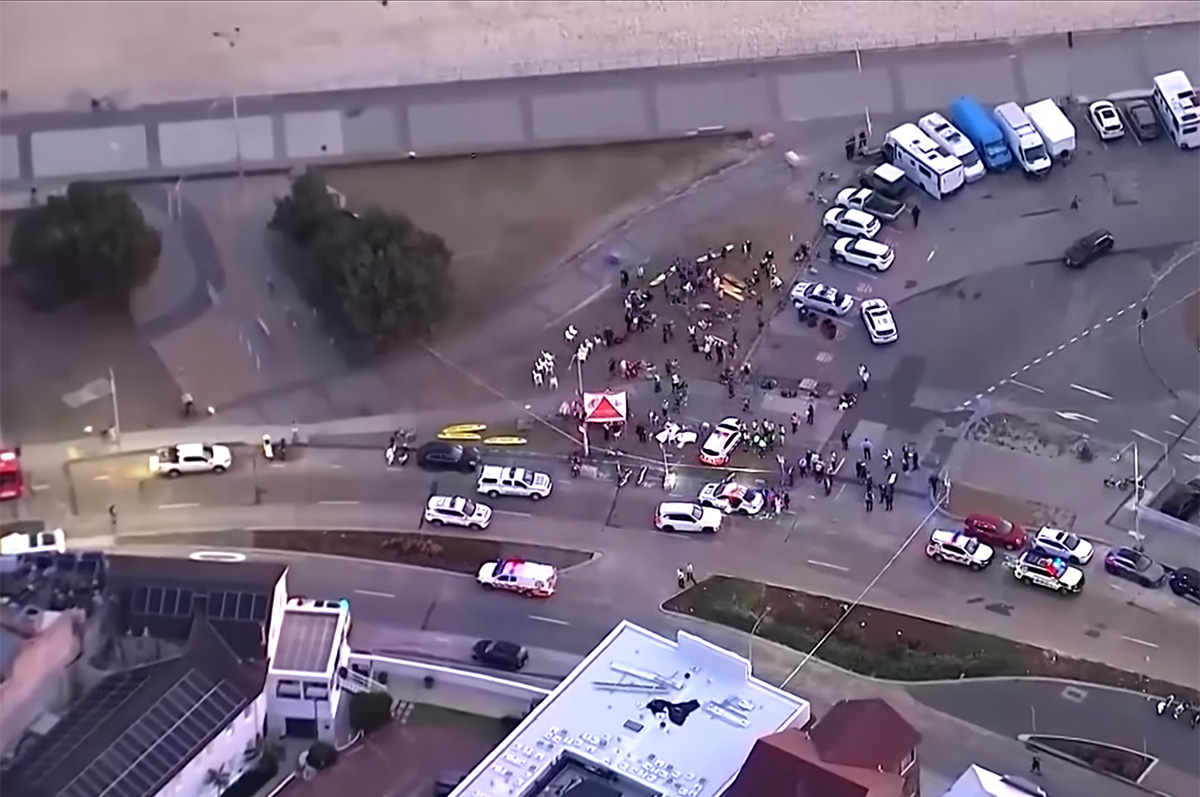
In the wake of the shooting at Bondi Beach that targeted Jews, many of us are sitting with a familiar feeling: exhaustion. Not shock or surprise, but the deep weariness that comes from knowing this violence continues. It is yet another reminder that antisemitism remains persistent.
Bondi Beach is far from Washington, D.C., but antisemitism does not respect geography. When Jews are attacked anywhere, Jews everywhere feel it. We check on family and friends, absorb the headlines, and brace ourselves for the quiet, numbing normalization that has followed acts of mass violence.
Many of us live at an intersection where threats can come from multiple directions. As a community, we have embraced the concept of intersectional identity, and yet in queer spaces, many LGBTQ+ Jews are being implicitly or explicitly asked to play down our Jewishness. Jews hesitate before wearing a Magen David or a kippah. Some of us have learned to compartmentalize our identities, deciding which part of ourselves feels safest to lead with. Are we welcome as queer people only if we mute our Jewishness? Are those around us able to acknowledge that our fear is not abstract, but rooted in a lived reality, one in which our friends and family are directly affected by the rise in antisemitic violence, globally and here at home?
As a result of these experiences, many LGBTQ+ Jews feel a growing fatigue. We are told, implicitly or explicitly, that our fear is inconvenient; that Jewish trauma must be contextualized, minimized, or deferred in favor of other injustices. Certainly, the world is full of horror. And yet, we long for a world in which all lives are cherished and safe, where solidarity is not conditional on political purity or on which parts of ourselves are deemed acceptable to love.
We are now in the season of Chanuka. The story of this holiday is not one of darkness vanishing overnight. It is the story of a fragile light that should not have lasted. Chanuka teaches us that hope does not require certainty; it requires persistence and the courage to kindle a flame even when the darkness feels overwhelming.
For LGBTQ+ Jews, this lesson resonates deeply. We have survived by refusing to disappear across multiple dimensions of our identities. We have built communities, created rituals, and embraced chosen families that affirm the fullness of who we are.
To our LGBTQ+ siblings who are not Jewish: this is a moment to listen, to stand with us, and to make space for our grief. Solidarity means showing up not only when it is easy or popular, but especially when it is uncomfortable.
To our fellow Jews: your exhaustion is valid. Your fear is understandable, and so is your hope. Every candle lit this Chanuka is an act of resilience. Every refusal to hide, every moment of joy, is a declaration that hatred will not have the final word.
Light does not deny darkness. It confronts it.
As we light our candles this Chanuka season, may we protect one another and bring light to one another, even as the world too often responds to difference with violence and hate.
Joshua Maxey is the executive director of Bet Mishpachah, D.C.’s LGBTQ synagogue.

